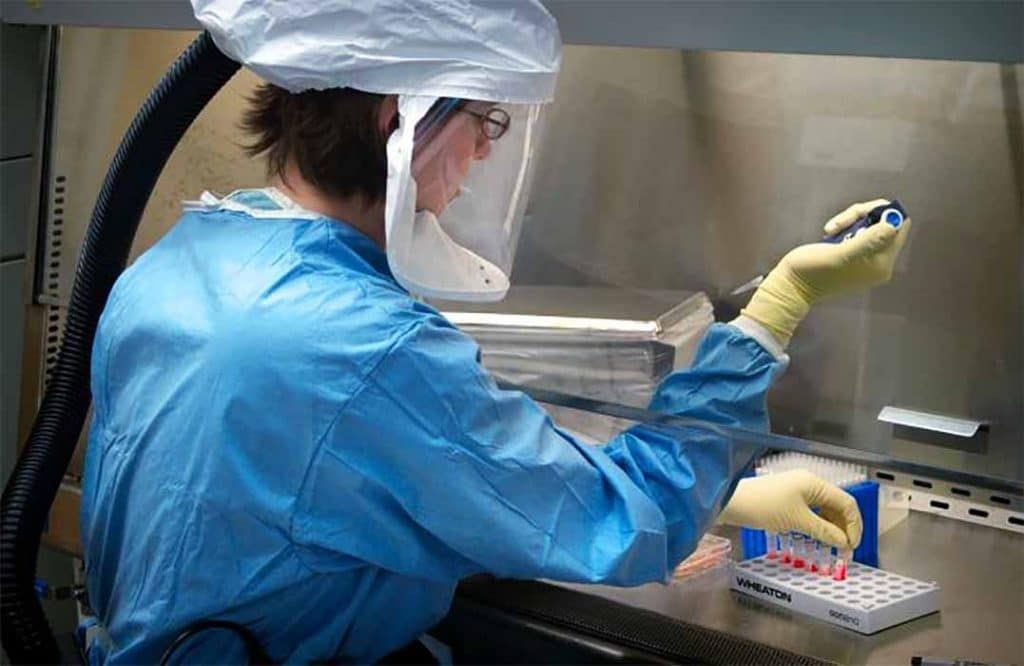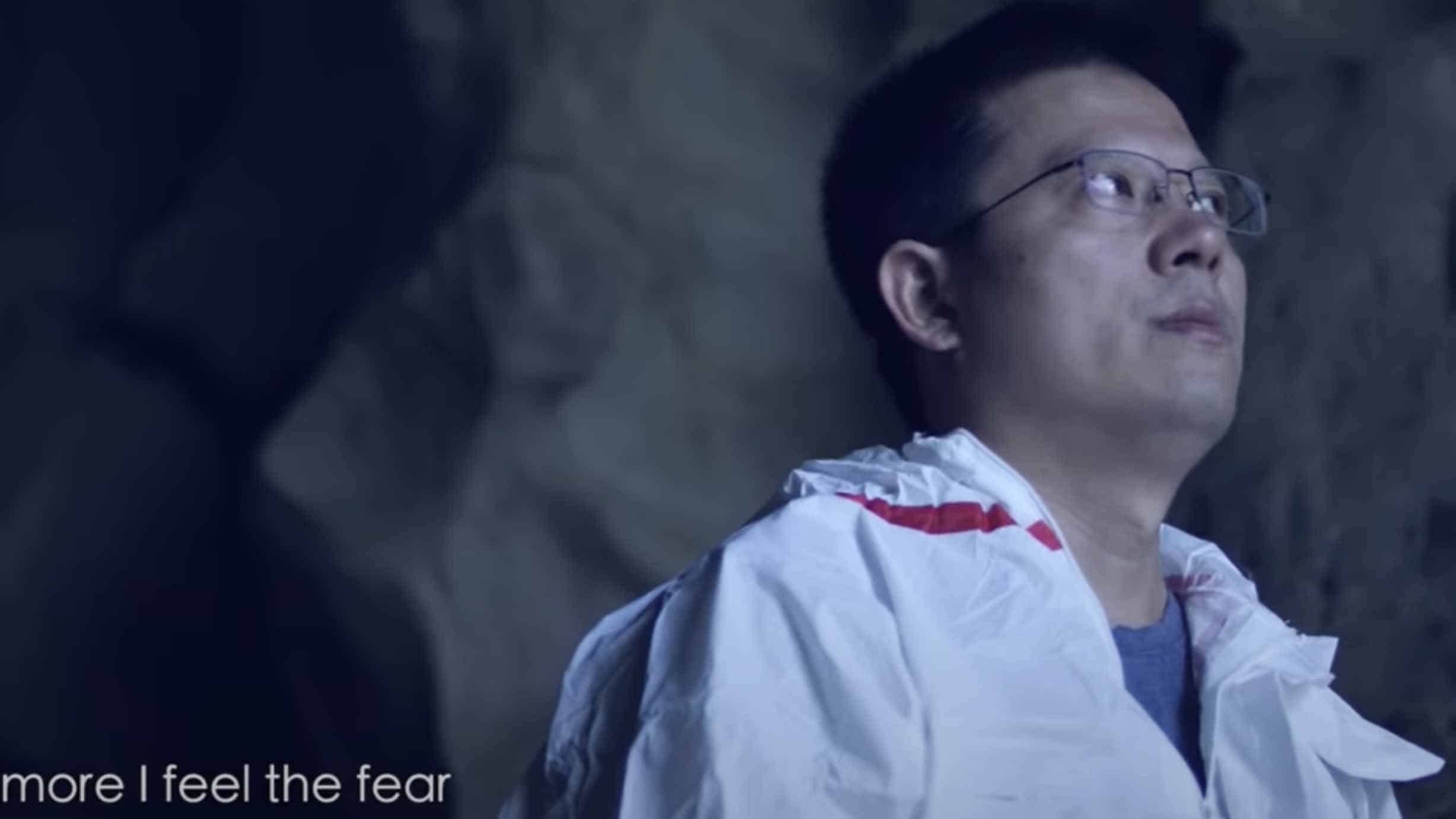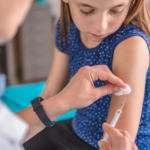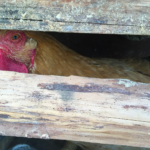Natural spillover or research lab leak? Why a credible investigation is needed to determine the origin of the coronavirus pandemic
By Filippa Lentzos | May 1, 2020
 A US Centers for Disease Control and Prevention scientist works in a biosafety level 4 lab. Credit: US Centers for Disease Control and Prevention.
A US Centers for Disease Control and Prevention scientist works in a biosafety level 4 lab. Credit: US Centers for Disease Control and Prevention.
There is solid evidence based on genetic analysis from scientists in multiple countries that the COVID-19 pandemic resulted from a natural spillover event, with the coronavirus most likely jumping from bats to people, perhaps via an intermediate animal species. What we have less evidence about is where that spillover event happened. While many scientists believe that the coronavirus first infected humans in nature or through the wildlife trade, others think an accident could have occurred during the course of scientific research on coronaviruses or the animals that harbor them.
Within two weeks of notifying the World Health Organization (WHO) of a cluster of pneumonia cases of unknown cause in Wuhan, China, on December 31, 2019, the Chinese government maintained the cases were associated with exposures at the Huanan Seafood Wholesale Market in Wuhan, where live wildlife was reportedly sold. By then, researchers in China had already identified the new coronavirus, later named SARS-CoV-2, and shared its genetic sequence with other countries to use in developing diagnostic kits. But a description of the first clinical cases published in the medical journal The Lancet on January 24 challenged Beijing’s version of events. Written by a large group of Chinese researchers from several institutions, the article concluded that 13 of the first 41 hospitalized COVID-19 patients in Wuhan had no contact whatsoever with the market. This included the first person to present with the disease.
The corresponding author of the article told Science “we still do not know where the virus came from” but that it is clear the market is “not the only origin.”
Soon, other origin theories began to circulate. Could researchers working with coronaviruses in labs in Wuhan accidentally have become infected? If you’re culturing a virus that is readily able to infect humans, particularly via the respiratory tract, then any droplet caused by a simple splash or aerosolization of liquid can be inhaled without you realizing it. And not everyone infected with SARS-CoV-2 shows symptoms. Could an unknowingly infected researcher showing no symptoms unwittingly have infected family, friends, and anyone else he or she was in contact with? Or was there perhaps an unnoticed leak of a coronavirus from the lab, from improperly incinerated waste material or animal carcasses that found their way to rubbish bins that rats or cats could have accessed? Another theory is that an infection occurred during fieldwork, when researchers were collecting viruses from bats deep inside mountain caves.
Many scientists, including Peter Daszak, an expert in emerging diseases who has worked with colleagues in China, do not believe the coronavirus pandemic can be attributed to a lab accident. Instead, Daszak believes that it’s much more likely that bats transmitted the disease to people in nature. Based on previous research, Daszak thinks that 1- to 7-million people in Southeast Asia a year are exposed to bat viruses. He told Vox that half-a-dozen people work in the sophisticated labs at the Wuhan Institute of Virology that contain coronavirus cultures: “So let’s compare 1-million to 7-million people a year to half-a-dozen people; it’s just not logical.” Various researchers have other reasons to believe a lab accident couldn’t have happened.
Other origin theories, however, focused on safety lapses in the course of basic scientific research, are all possibilities. While there is, as of yet, little concrete evidence for them, there are several indications that collectively suggest this is a serious possibility that needs following up by the international community.
Coronavirus research in Wuhan. There are two institutions in Wuhan working on coronaviruses, and both collect live animals to study the viruses. A few hundred meters from the seafood market is the Wuhan Center for Disease Control and Prevention (CDC). The second institution, the Wuhan Institute of Virology, is split over two campuses, one around 10 kilometers from the city center, and one nestled in the hilly outskirts of Wuhan, around 10 kilometers south.
The southern campus houses the National Biosafety Laboratory, the first biosafety level 4 (BSL-4) lab in mainland China. Conceived following the severe acute respiratory syndrome (SARS) outbreak in the early 2000s, the lab was physically completed in 2015, in collaboration with the French government’s CIRI lab, and became operational in early 2018. The institute has become a world leader on bat coronaviruses and it has established one of the largest strain collections.
Research teams from the institute have spent years visiting caves in the southern, subtropical Yunnan province in China to harvest the viruses.
In a recent Scientific American feature, one of the institute’s lead virologists, Shi Zhengli, describes how her teams have had to hike through steep terrain and inch through tight rock crevasses on their stomachs to locate the hard-to-find, deep, narrow bat caves. When they find one, they stretch a net across the opening to catch the bats when they come out at night to feed. Once trapped, the researchers take blood, saliva and fecal samples from the bats, often working late into the night. They have discovered hundreds of bat-borne coronaviruses this way. Genetically very diverse, the majority of them are harmless, Shi told outlet. Dozens, she said, belong to the same group as SARS: “They can infect human lung cells in a petri dish and cause SARS-like diseases in mice.”
It is important to study such viruses to learn more about them–to learn, for instance, how they jump from one species to another and what diseases they cause when they do. The viral melting pots of bat caves provide ideal conditions for dangerous new pathogens to emerge. These are the types of places where SARS-CoV-2’s two deadly coronavirus predecessors are believed to have come from: SARS-CoV, the coronavirus behind the SARS outbreak of 2002-2003, and MERS-CoV, the coronavirus responsible for the Middle East respiratory syndrome (MERS). Studies can show us what’s coming, the reasoning goes, and help us better prepare.

Unfortunately, working with bats is highly risky. A promotional video for the Wuhan CDC published in December 2019, introduces Tian Junhua, associate chief technician in the Department of Disinfection and Pest Control. He too works on coronaviruses and collects them from bats in caves. The video shows footage of him and colleagues inside caves wearing personal protective suits, googles, and face masks. You see them catching bats in nets, and using tongs to handle the bats they catch. You also see them holding bats with razor-sharp teeth in gloved hands, and, using tweezers, picking off a tick and depositing it in a small plastic vial. “When you find the viruses” Junhua explains in the video, “you are also most easily exposed to the viruses.”
While helpful, protective gear doesn’t necessarily shield the researchers from scratches or bites from the bats. The risk of infection is clearly on Junhua’s mind in the video. Yet, a Voice of America article describes national regulators having found “sloppy” bat handling practices during a review: “One of the researchers working at the Wuhan CDC described to China’s state media that he was once attacked by bats and he ended up getting bat blood on his skin. In another incident, the same researcher forgot to take protective measures, and the urine of a bat dripped ‘like rain onto the top of his head,’ reported China’s Xinhua state news agency.” Other scientists commenting on the video have judged the protective equipment used “inadequate” and the team’s operational practices “unsafe.”
Shi’s team from the Wuhan Institute of Virology didn’t just collect bat viruses during fieldwork. It also collected blood samples from more than 200 residents in villages close to one of the bat caves they’d been harvesting viruses from. They found that 3 percent had antibodies against SARS-like coronaviruses, suggesting that nearby villagers had been infected by the bats despite not displaying SARS-like or other pneumonia-like symptoms. “Bats fly out every night over their houses” one of the researchers explained. “Some of them shelter from rain in caves, or collect guano for fertilizer.” The study not only highlights the risks of fieldwork in bat caves, but added further evidence that some coronaviruses are able to directly infect humans without intermediate hosts.
Fieldwork risks are one thing, but lab work risks are significant, too. Because most coronaviruses are harmless, and the ones that infect humans generally only cause a cold, the viruses have been classified as relatively low risk, to be studied at biosafety level 2 (BSL-2) labs. Problems arise when new, dangerous coronaviruses unexpectedly appear, as BSL-2 containment only provides minimal protection for workers and the environment.
While coronaviruses were studied at BSL-2 at the Wuhan CDC, they were also studied at higher containment levels at the Wuhan Institute of Virology. This is because one of the things some scientists do in their labs is to engineer chimeric viruses. Chimeric viruses are hybrid viruses with genetic mixtures of two or more different viruses, and they can sometimes result in new viruses that are even more dangerous than the parent viruses. This is what happened when Shi’s team combined a coronavirus circulating in Chinese horseshoe bats with SARS-CoV.
The work, reported in a 2015 paper in the prestigious journal Nature Medicine, was controversial, with some scientists remarking that, “If the virus escaped, nobody could predict the trajectory.” Shi and her co-authors recognized that their work was high risk, and they worried that it might be severely restricted moving forward. They wrote: “On the basis of these findings, scientific review panels may deem similar studies building chimeric viruses based on circulating strains too risky to pursue, as increased pathogenicity in mammalian models cannot be excluded… research into CoV emergence and therapeutic efficacy may be severely limited moving forward.”
The US government had imposed a moratorium on these so-called gain-of-function studies in 2014. No such restrictions were imposed in China, but the work of Shi and Daszak, a collaborator who is also the president of the environmental health nonprofit EcoHealth Alliance, was funded in part through US government grants. Their work was already underway before the moratorium began, and the US National Institutes of Health (NIH) allowed it to proceed while it was under review by the agency. The NIH eventually concluded the work was not so risky as to fall under the moratorium.
Shi’s group continued its coronavirus research and chimeric virus studies with ground-breaking findings, and with renewed $3.7 million funding from the NIH for their work on “understanding the risk of bat coronavirus emergence.” Some of this work involved infecting lab animals with coronaviruses. In January 2020, the group pre-published evidence, later published in Nature, that SARS-CoV-2 likely originated in bats, with a very close match to a coronavirus strain previously isolated by her group from the Yunnan caves. As the origins of COVID-19 became increasingly politicized in April, the Trump administration, in an abrupt and unusual move, directed the NIH to cut funding for the coronavirus emergence project.
Accidents happen. Labs studying dangerous viruses and bacteria are built to protect researchers, the public, and the environment from harm. But lab design cannot overcome human error or poor training. With each experiment comes opportunities for accidental exposures and inadvertent infections. Accidents happen all the time in labs around the world.
There have been documented cases of safety lapses in the course of work specifically with coronaviruses. The first reported case of a lab-acquired SARS-CoV infection came from Singapore, shortly after the SARS outbreak had ended there in 2003. A 27-year-old graduate student in microbiology researching West Nile virus wanted to compare the attenuated strain he was working on with the more pathogenic New York strain of West Nile. He usually worked in a BSL-2 lab, but the pathogenic strain required him to work at a higher biosafety level and he didn’t have the appropriate training for that. Still, his institute agreed for him to do the work, and before he began, he was given a 20-minute introduction to standard BSL-3 procedures.
The institute had been heavily involved in SARS-CoV work during the outbreak, and it was continuing this work as the graduate student began growing strains of West Nile virus. The cells used to grow the virus are the same cells used to grow coronaviruses, and accidental contamination caused the cells growing West Nile virus to also start growing SARS-CoV. Both viruses were found to be present in samples that the graduate student worked on three days before he fell ill with SARS. An investigation into the case concluded “transmission occurred as the result of an error made by the technician, the [graduate student], or both.” The graduate student was likely not co-infected with West Nile virus, it noted, because the viruses are transmitted differently. The investigation also noted that concern regarding the potential risk to lab personnel working with coronaviruses “is justified” and that the case highlights “the importance of strict adherence to effective biosafety practices.”
In a second case, in December 2003, a medical researcher from a military hospital lab in Taiwan tested positive for SARS after a lab accident from “hurrying to complete an experiment” with SARS-CoV. In April 2004, a postgraduate student and a postdoctoral researcher at the Chinese Institute of Virology in Beijing were accidentally infected with SARS-CoV, in two separate incidents. They were likely infected through a batch of supposedly inactivated virus that was brought from a high-containment facility into a low-safety diarrhea research lab where the two were working. The WHO coordinator in China of communicable disease surveillance and response commented that the incident “raised real concerns about biosafety in general, how biosafety guidelines are implemented, and how that is supervised and monitored.”
Biosafety practices around coronaviruses was also the topic of cables sent from the US embassy in Beijing to Washington two years ago, as recently reported in The Washington Post. US diplomatic scientists had visited the Wuhan Institute of Virology several times, and two cables were sent to alert the State Department of their concerns with management weaknesses and “a serious shortage of appropriately trained technicians and investigators needed to safely operate this high-containment laboratory.” The cables explicitly raised concern that the lab’s coronaviruses research could risk a new SARS-like pandemic, and called for more US support for the lab to help fix its problems.
The specific biosafety concerns about the institute come on the back of more general concerns about biosafety in China. An article by Yuan Zhiming, a chief scientist at the institute, describes widespread deficiencies in biosafety training, noting that “most laboratories lack specialized biosafety managers and engineers.” He also writes, “Maintenance cost is generally neglected; several high-level [BSL-3 labs] have insufficient operating funds for routine, yet vital processes… some BSL-3 laboratories run on extremely minimal operational costs or in some cases none at all.” This is worrying as China has dozens of BSL-3 labs, and plans to build another half-dozen BSL-4 labs.
On February 14, Chinese President Xi Jinping highlighted the need to incorporate biosafety into its national security regime. Xi’s remarks were immediately followed by a Ministry of Science and Technology instruction on strengthening biosafety management in labs handling the novel coronavirus.
Suppression. There are indications that Beijing has made significant attempts to control the pandemic origins narrative and to stifle alternative origin theories to the seafood market version. CNN reported on April 16 that Beijing has placed severe restrictions on the publication of pandemic origins research. All academic papers on the topic were from then on to be subject to extra vetting and approval by central government officials before publication. The policy seems to formalize previous de facto practices. An early study by South China University of Technology researchers posted to ResearchGate that concluded SARS-CoV-2 probably originated at the Wuhan CDC was almost immediately blocked. The author, Botao Xiao, later told the Wall Street Journal that he had withdrawn the paper because it “was not supported by direct proofs.”
A press release about the US embassy visits to the Wuhan Institute of Virology, along with newsletters and other documents, have been taken down from the institute’s website. Some of the material, however, remains archived on the internet. In February, Beijing appointed Major General Chen Wei, China’s top biowarfare expert, as head of the institute’s BSL-4 lab.
Chinese investigative journalists take great risks in reporting on the outbreak, and doctors who early on in the outbreak shared information about what they were seeing were summoned by the authorities. One investigative report into early signs of the virus being throttled in Singapore’s The Straits Times describes how Beijing ordered genomics companies to stop releasing test results and to destroy their samples of the virus from early COVID-19 cases, how whistleblowers were punished, and how a Shanghai lab that published the novel coronavirus genome on January 11 was shut down by authorities for “rectification.”
What needs to happen? On April 30, the US intelligence community released a statement on origins of COVID-19, formally concluding that the virus behind the pandemic originated in China. The statement reiterated earlier assertions that SARS-CoV-2 was not man-made or genetically altered, echoing genetic evidence-based findings from the scientific community. Allegations to the contrary keep resurfacing, but this is to serve political ends, not to establish facts on the ground.
After claims of Trump administration pressure on the intelligence community to find evidence that China, and specifically the Wuhan Institute of Virology, are to blame for the pandemic, the April 30 statement pointedly declined to rule out the possibility that the virus had escaped from the institute. It said the intelligence community “will continue to rigorously examine emerging information and intelligence to determine whether the outbreak began through contact with infected animals or if it was the result of an accident at a laboratory in Wuhan.”
Beijing firmly maintains the market narrative, and the Wuhan Institute of Virology and its lead scientists have categorically denied any connection to the pandemic. Yet, without any evidence there will be no closure.
Countries that establish high containment facilities, or that fund high risk research like chimeric coronavirus studies, have an added responsibility to the international community. They need to demonstrate that they operate these facilities safely and securely, that appropriate risk assessments are conducted, and that there is some accountability in place if they do not. China has an opportunity to be a leader in this respect, by opening up its relevant lab facilities, specifically the Wuhan Institute of Virology and the Wuhan CDC, to an investigation.
But a US intelligence-led investigation will not convince anyone. Neither will a China-led investigation, such as the one currently underway focused on environmental sampling at the seafood market, collection of records on the sources and type of wildlife species sold at the market, and the destination of those animals after the market was closed down. Australia has called for an international investigation, and will use its seat on the executive board of the World Health Assembly, the decision-making body of the WHO, to push for a WHO-led investigation at the annual May meeting. While Australia’s stance has angered Beijing, it currently seems the most sensible approach, and there are experiences of both national and international investigations into biosafety breaches, as well as biosafety and biosecurity inspections, that it could build on.
The most important aspects would be a neutral stance, a ton of diplomacy, the best of science, the coolest of heads, and time.
While that may seem a tall order, it is worth striving for.
Together, we make the world safer.
The Bulletin elevates expert voices above the noise. But as an independent nonprofit organization, our operations depend on the support of readers like you. Help us continue to deliver quality journalism that holds leaders accountable. Your support of our work at any level is important. In return, we promise our coverage will be understandable, influential, vigilant, solution-oriented, and fair-minded. Together we can make a difference.
Keywords: Coronavirus, biosafety lab, lab leak
Topics: Biosecurity
















Brilliant, Fillipa. Thank you for this comprehensive piece.
Unfortunately the Chinese destroyed all the evidence at the Huanan Seafood Market by thoroughly disinfecting it. But the first few cases were in people with no connection to that market anyway.
If the virus had been transmitted naturally from bat to human, you would expect that to occur where the bats live, not in Wuhan. The big thing in Wuhan is the virology labs. So yes, it is a very good bet this virus escaped somehow from a lab. Will we ever prove that? Probably not. Even if the accident was known at the time it happened and was documented in lab notebooks, I’m sure those records are under the highest security classification. And even if the accident was not documented, if the lab was working with this virus, or one… Read more »
If Covid-19 was an accidental release from a bio-laboratory, the Chinese may or may not know about it. Unlike radioactive and chemical hazards, there is not the clear signal where it came from. If you have an epidemic taking off, collecting evidence is down on the list of priorities. In the U.S. there have been containment failures in bio-laboratories. The real question for the future is whether bio-level 3 and bio-level 4 experiments should be allowed in or near major cities where a disease can spread very rapidly. Neither the Department of Defense nor the Department of Energy tolerate experiments… Read more »
Why no mention of the closing down of the biolab at Ft. Detrick, Maryland by the CDC last August for engaging in sloppy practices?. The timing makes the subject of eminent interest.
A very comprehensive and nuanced discussion in a topic usually limited to crude blame and name-calling.
This article, perhaps well-intentioned, gives credence to a political conspiracy theory that is almost universally rejected by actual scientists. The article presents the conspiracy theory as a legitimate viewpoint through three principle fallacies. First, the article fails to appreciate the extent of coronavirus diversity in southeast China and globally, not recognizing that lab samples represent a tiny fraction of potentially dangerous viruses that surround us in nature. Second, the article does not appreciate that these viruses are constantly spilling across bat species, and from bats into humans and their livestock. Even given the dangers of bat (and all infectious disease… Read more »
Thank you for your comment. There are historical examples of lab releases that caused epidemics (see https://armscontrolcenter.org/wp-content/uploads/2016/02/Escaped-Viruses-final-2-17-14-copy.pdf), which I assume is why you qualified your statement with the phrase “had never before caused an epidemic in nature.”
Thank you, John, for that link. My phrase is not merely a qualification: those strains that escaped were in our laboratories because they had earlier caused epidemics. This supports the points I made above: our planet is a laboratory for the evolution of these pathogens far more potent and dangerous than BSL3 and BSL4 facilities. Let’s hope our readers come away understanding this fundamental point.
Utter rubbish. I come from countries in which all of us have degrees, so let us assume we are not talking among 5 year olds with crayon drawings. Many of us do stats. Virtually all the probabilities of a natural spillover (maybe That should be the conspiracy because it sure looks it from the number of conflicted & vested parties involved in its propogation), are negated and nullified by the chances of Daszak boasting of exactly this virus’ “gain-of-function” engineering of SARS bat-viruses (using EXACTLY these spike-protein) at that lab with Exactly a Shi learning from a Baric doing Exactly… Read more »
A mathematical approach to determining the origins of a coronavirus outbreak could help, comparing probabilities of potential sources. To convey the general idea, here are a few examples and very rough estimates: 1. Accidental leak at a lab researching coronaviruses leading to an outbreak: Between a 1-in-500-year event and 1-in-a-million-year event. Analysis focusing on human error in labs suggests that human error leading to an outbreak may be a 1-in-500-year event. See https://thebulletin.org/2019/02/human-error-in-high-biocontainment-labs-a-likely-pandemic-threat/ Biosafety Labs’ design specs likely aim to ensure that a lab leak leading to an outbreak is a 1-in-a-million-year event. (Similar risk assessments were once made for… Read more »
Excellent article.
susanne DeWitt- Molecular Biologist
There’s a major inaccuracy. This says WIV had done gain of function studies and made chimeric viruses. However the paper it linked to were to studies done in the US at the Uni. of North Carolina at Chapel Hill, not in China.
Dr. Zhengli Shi (WIV) worked together with Dr. Ralph Baric (Chapel Hill) on this project. They coauthored the paper on SARS-like viruses (https://www.nature.com/articles/nm.3985) and share the last authorship. Baric says, in a podcast (https://www.microbe.tv/twiv/twiv-591/ ~60 min), that he has sent a humanized ACE2 overexpressing mouse to Zhengli Shi. These animals/constructs could have been used in GOF research or not. We don’t know.
Just weeks before the pandemic first broke, Peter Daszak was openly discussing his “gain-of-function” engineering of more potent versions of bat-viruses (using spike-protein) at that very Wuhan lab. Considering no animal, living or dead’s been found infected with Covid-19, and the fact Daszak and his GoF “partner” Fauci have gone strangely silent on their sponsored risky Wuhan-lab research, what are the odds THEY don’t have lots of explaining to do?